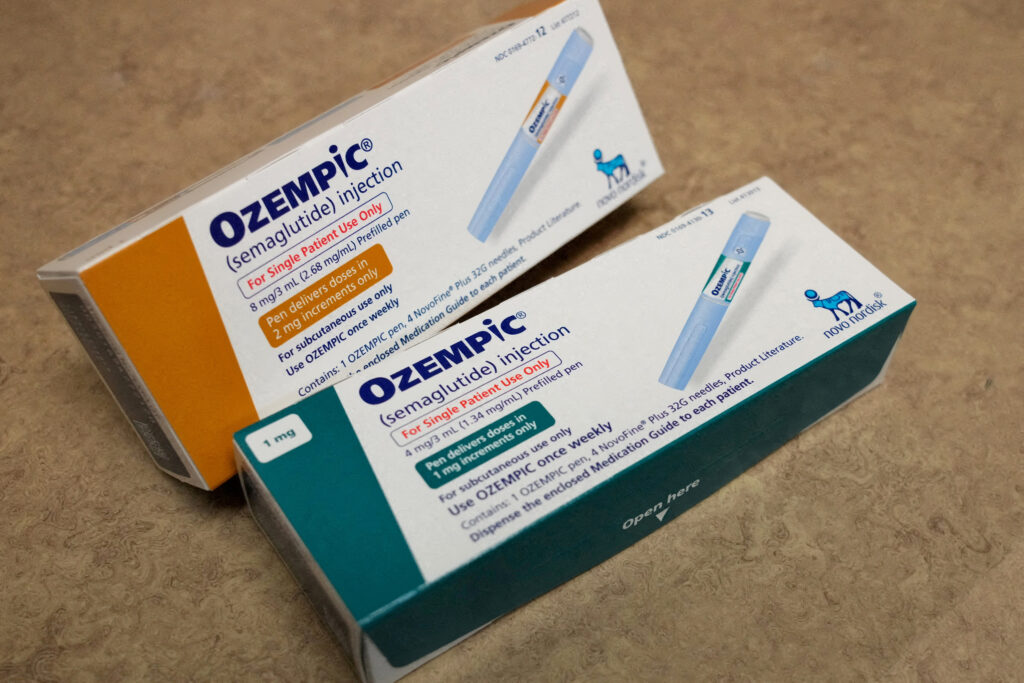In the realm of diabetes management, advancements in medications have long been a focal point, aiming to improve patient outcomes and quality of life.
However, a surprising trend has emerged alongside the evolution of these drugs – a substantial rise in the demand for glucose monitoring devices, propelled by the effects of specific diabetes medications like Ozempic.
Tip: Please fill out the form if you or a friend would like more information on glucose monitors.
Understanding the Link Between Diabetes Medications and Glucose Monitors
The landscape of diabetes care has undergone significant changes with the introduction of innovative medications designed to effectively manage blood sugar levels, aid in weight loss, and mitigate cardiovascular risks.
Ozempic, developed by Eli Lilly, is one such medication gaining prominence for its efficacy in the treatment of type 2 diabetes.
Interestingly, as these medications, including Ozempic, gain traction for their therapeutic benefits, they also present a unique challenge. Some of these drugs can induce hypoglycemia, requiring patients to maintain a heightened vigilance over their blood sugar levels.
This increased need for continuous monitoring has led to an unexpected surge in the utilization of glucose monitoring devices, particularly Continuous Glucose Monitors (CGMs).
Impact on Glucose Monitor Sales: A Financial Overview
Financial reports from major healthcare companies have been instrumental in unveiling this burgeoning trend.
Companies like Abbott Laboratories and DexCom have witnessed a substantial uptick in the sales of their CGM systems, primarily attributed to the effects of diabetes medications.
Abbott Laboratories: Reported a remarkable 30% increase in sales for its FreeStyle Libre system, soaring to an impressive $1.4 billion.
DexCom: Experienced a significant 27% surge in revenue, reaching an astonishing $975 million.
These numbers underscore the escalating reliance on CGMs among individuals utilizing various diabetes medications, where the necessity for consistent and accurate glucose monitoring has become paramount.
Must Read CGMs in noncritical care hospitals optimizes glycemic control
Unraveling the Data: Insurance Claims and User Behavior
Analysis of insurance claims has provided empirical evidence supporting the surge in CGM usage. Individuals on intensive insulin regimens have shown a doubling in their device utilization, indicating a greater dependency on monitoring tools.
Notably, even non-insulin-dependent individuals have quadrupled their usage, further reinforcing the increased demand for glucose monitoring.
This shift in behavior, a result of the correlation between diabetes medications and the potential risk of hypoglycemia, indicates a substantial change in how patients manage their condition.
The growing reliance on CGMs not only ensures better management of blood sugar levels but also highlights a shift towards proactive and personalized healthcare.
Read Guide about Wegovy Dosage Guide: The Best Way For Weight Loss
The Intersection of Device Innovation and Drug Therapy
The symbiotic relationship between innovative diabetic medications and advanced monitoring devices has paved the way for a new era in diabetes care.
While medications like Ozempic offer improved therapeutic outcomes, the need for continuous monitoring has elevated the significance of continuous glucose monitors in ensuring patient safety and treatment efficacy.
This convergence has prompted a redefinition of diabetes management protocols, underscoring the pivotal role played by device monitoring in modern healthcare practices.
As a result, patients now have access to a more comprehensive approach to managing their condition, empowering them to take proactive measures to safeguard their health.
Also, read about $2.5 Billion Lilly Investment Will Boost Diabetes and Obesity Drugs Production.
Market Impact and Future Projections
The collective impact of the surge in glucose monitor sales is not only limited to patient care but also extends to the market dynamics within the healthcare sector.
Companies specializing in manufacturing these devices, such as Abbott Laboratories and DexCom, are witnessing substantial growth, with their stocks reflecting this upward trend.
Analysts foresee a continued trajectory of growth in the CGM market, driven by the increasing adoption of diabetes medications like Ozempic.
This evolving landscape presents a promising opportunity for investors, with companies innovating in both drug therapy and device technology poised for substantial market gains.
Conclusion: Embracing a Holistic Approach to Diabetes Care
The remarkable surge in glucose monitor sales triggered by the effects of diabetes medications like Ozempic signifies a pivotal shift in diabetes management strategies.
The convergence of drug therapy and device innovation has reshaped the narrative, empowering individuals to adopt a more proactive and personalized approach to their healthcare.
As technology continues to advance and innovative medications enter the market, the synergy between therapeutic interventions and monitoring devices will continue to evolve, ensuring better outcomes and improved quality of life for individuals managing diabetes.
This paradigm shift not only emphasizes the importance of continuous monitoring but also heralds a future where holistic and personalized care takes center stage in the management of chronic conditions like diabetes.


